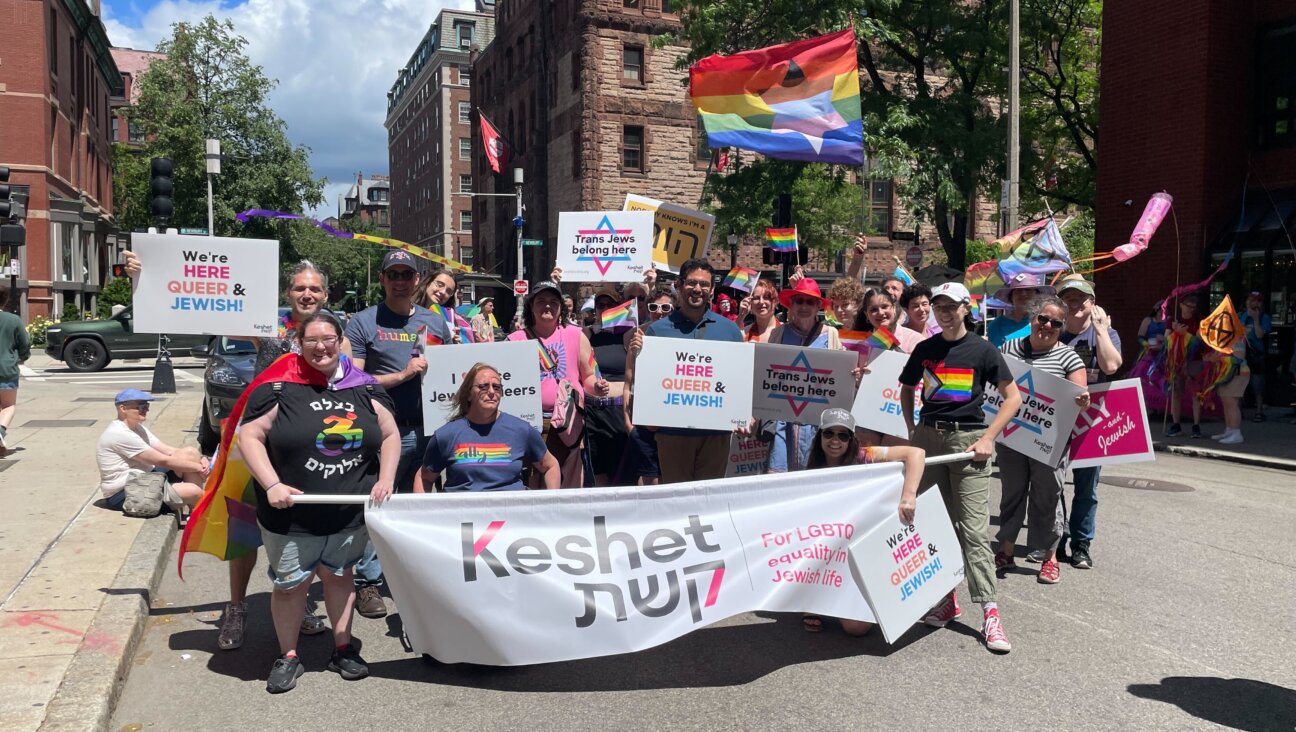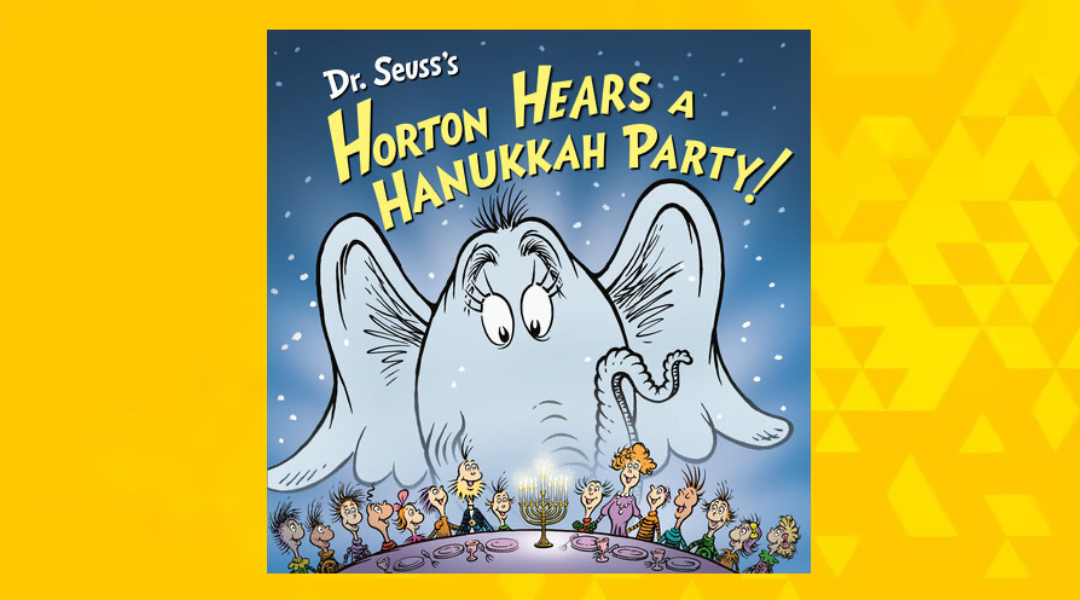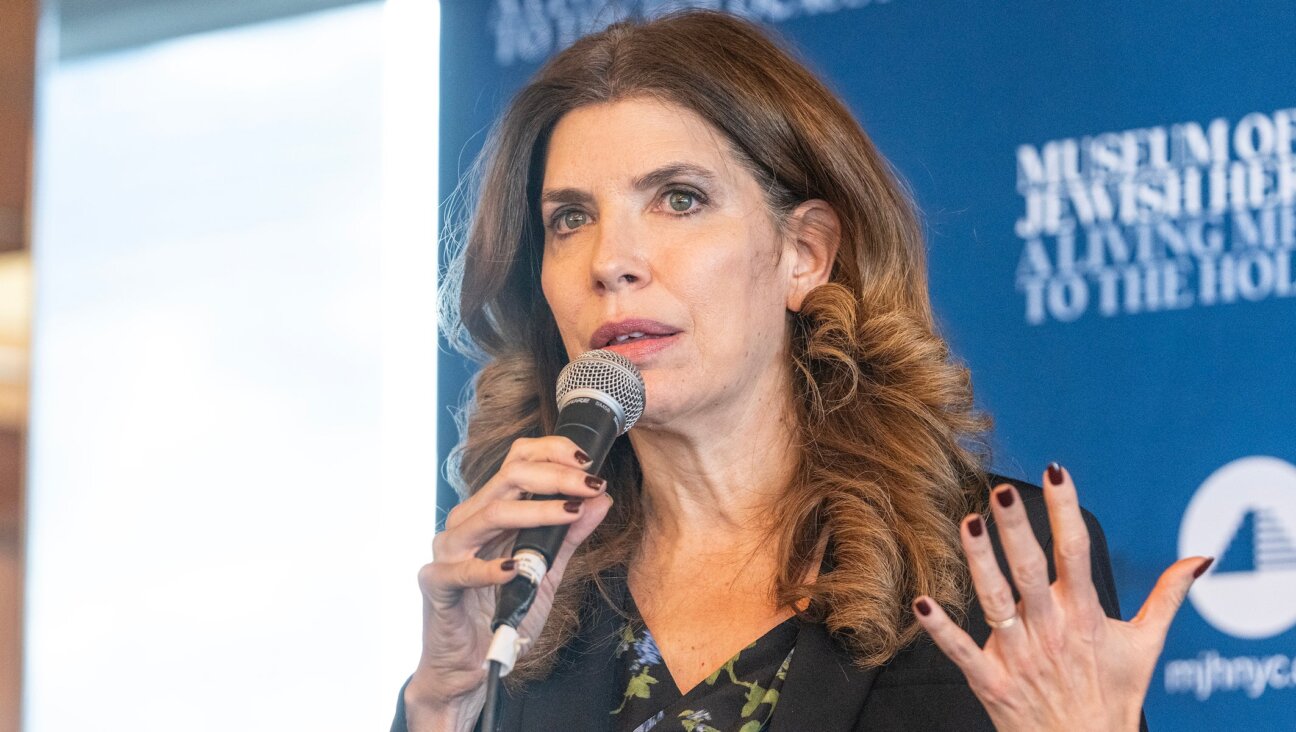Up From Pushkin Street
The Jewish Century
By Yuri Slezkine
Princeton University Press, 344 pages, $29.95.
* * *|
Yuri Slezkine begins the fourth chapter of his book, “The Jewish Century,” with a synopsis of Tevye’s daughters, from Sholom Aleichem’s “Tevye the Milkman,” as if it were a parable of all modern Jewish history. “Tsaytl rejected a wealthy suitor to marry a poor tailor, who died of consumption. Hodl followed her revolutionary husband, Perchik, into Siberian exile. Shprintze was abandoned by her empty-headed groom and drowned herself. Beilke married a crooked war contractor and fled with him to America. Chava eloped with a non-Jewish autodidact (‘a second Gorky’) and was mourned as dead, only to return, repentant, at the end of Sholom Aleichem’s book.” The chapter is titled “Hodl’s Choice: The Jews and Three Promised Lands.”
“The Jewish Century” is a panorama of both Jewish life in the old country at the turn of the 20th century and of the choices confronting Jews under stress from without, by pogroms, and from within, by revolutionary ideas and movements. Jews in the small communities of Eastern Europe and the Russian Pale of Settlement were setting out on journeys from the shtetls to the big cities (Warsaw, Leningrad, Odessa, Kiev) or from the old world to the new (the United States in the main, but also Canada, South Africa and Argentina), or, in smaller numbers, to Palestine. The Russian Revolution, America and Palestine were the three Utopias that beckoned them, but it is Hodl’s choice to join the revolution that mainly absorbs Slezkine. A professor of history at the University of California at Berkeley, Slezkine was born in Russia and grew up with the generation of Hodl’s grandchildren, whose grandparents took the Russian Revolution for their Utopia of choice and were its champions, its willing instruments and its victims. To this day, he has friends whose parents are named Lenina and Ninel (Lenin spelled backward).
The consequences of Hodl’s choice play out within a sweeping historical framework that sees the Jews’ peril and success as stemming from the Jewish people being Mercurians in an Apollonian world. Apollo was the god of agriculture and livestock, Mercury or Hermes that of messengers, merchants and craftsmen. The Mercurian, or “service nomad,” is an ethnic stranger to the community, an internal alien, who performs certain needed roles (horse or cattle trading, smithing or handicrafts, medicine, diplomacy, smuggling or currency trading) for a host population that is rooted, agrarian and tradition bound. Service nomads are likely to be dispersed peoples: overseas Lebanese or Syrian Christians, diaspora Chinese or Indians, Gypsies, Irish “Travelers,” the Sheikh Mohammadi of Eastern Afghanistan, the Parsis of Bombay. In Europe, the Jews were the most numerous and important of service nomads at the close of the 19th century. They were educated, skilled, mobile, landless, urban, cosmopolitan, clannish and worldly. “Economic success, and indeed the very nature of the Mercurians’ economic pursuits, are associated with another common and essentially accurate perception of
their culture: ‘They think they are better than everybody, they are so clever.’” It is perhaps this alone, the Jews’ Mercurianism in the lands of agrarian Apollonians, that tells us much we need to know about antisemitism.
Though an audacious bit of ethnographic theorizing leads Slezkine to liken Jews to the Eta people of Tokugawa Japan and to the Fuga of Ethiopia, this story is basically window-dressing for the one Slezkine wants to tell: that of Hodl’s choice and its consequences for her children and grandchildren under Soviet Communism. As we learn in the book’s main chapters, including one on Isaac Babel, “Babel’s First Love: The Jews and the Russian Revolution,” that history is still only dimly perceived in the West, and Slezkine, working extensively with Russian sources, is delivering much-needed news. The Jews who turned to the revolution — mainly Russian-speaking, secular, assimilated Jews — had been Russified by great literature and had taken up residence on “Pushkin Street.”
The revolutionaries were kulturni; they lived with “Pushkin, Herzen, Tolstoy, Chekhov, and an assortment of Western Classics as much as they lived with industrialization, collectivization, and cultural revolution.” The official Young Communist poet, Eduard Bagritsky, wrote in 1924:
To Jews, this spirit was heroic, transforming and spiritually bracing. In the story “How It Was Done in Odessa,” Isaac Babel has one of his characters say: “Forget for a while that you have glasses on your nose and autumn in your soul. Stop quarreling at your desk and stuttering in public. Imagine for a second that you quarrel in city squares and stutter on paper. You are a tiger, a lion, a cat. You can spend the night with a Russian woman, and the Russian woman will be satisfied.” It was a call to inflamed Jewish youth, complete with promises of redemptive miscegenation, and Jews, weary of the autumn in their souls, threw themselves into the struggle passionately.
That story darkened, and in more ways than we had imagined. Babel’s readers and Hodl’s children moved uptown from Pushkin Street to become soldiers and generals in the Red Army, ideologues and civil servants in the revolution, executioners for Stalin, and in the bitterest of bitter ends, prominent among those executed. Among the old Bolsheviks, Trotsky (Bronstein), Kamenev (Rosenfeld), Zinoviev (Radomyslsky) and Radek (Sobelsohn) were Jews. So were some leading members of the Cheka, Lenin’s secret police (reorganized as OGPU in 1923), who inaugurated the terror and later became, in turn, its victims. Thus, “Lev Shvartsman, the star interrogator who had co-authored Babel’s confession, now produced his own, in which he claimed that he had belonged to a Jewish terrorist organization and had had sex with his son, his daughter, the former state security minister V.S. Abakumov, and the British ambassador, N.I. Eitingon, who had organized the murder of Trotsky (among many others)….” Genrikh Yagoda (Enokh Gershenovich), chief of the NKVD (which replaced the OGPU, which replaced the Cheka), was Jewish and had earned Stalin’s temporary favor by being in charge of the White Sea Canal project from 1931 to 1934, one of the infamous Gulag projects built by labor camp inmates. He even arrested, in 1936, Kamenev and Zinoviev on charges of plotting with Trotsky, though in the end he could not save himself and was executed two years later. Even some of the murdered Yiddish writers of 1952 were true believers, including Perets Markish and Itsik Fefer, who had been an informer for the NKVD and at his own trial denounced his own love of the Jews as treasonous nationalism.
“The Jewish Century” is a disturbing book about enormities, and is appropriately thick with documentation, much of it from Russian sources that will be new to most readers. Yet it is also a Mercurian’s performance, much of whose pleasures are to be found in its tangents and throwaway insights. Along the way, Slezkine digresses about Swann’s Jewish nose (from Marcel Proust’s “Swann’s Way”), which becomes accentuated as he moves toward death, revealing the nose “of an old Hebrew rather than of a dilettante Valois.” James Joyce’s Leopold Bloom (of “Ulysses”) turns out to be one of the book’s secret heroes, being an ideal Mercurian among Apollonians: isolated, peripatetic (he spends an entire day on his feet), hating dirty eaters, disapproving of drunkenness, decrying the death penalty, resenting violence and intolerance, abominating “the patriotism of barspongers,” and ambiguous in his Jewishness: He had been baptized a Protestant and later re-baptized a Catholic, though he is taken by everyone, including himself, to be a Jew. And in a brilliant aside on Philip Roth’s “American Pastoral,” Slezkine reads the life of Swede Levov in Old Rimrock, N.J., as a mirror of the Jewish dachniki of 40 years earlier. Hodl’s children, who had passionately embraced the Soviet Union, had profited from their high party status, and enjoyed the privilege and luxury of summer dachas until it all came crashing down on them.
Along the way, Slezkine keeps us informed that this history is also a personal matter. “My own grandmother went first to Argentina, then to ‘Stalin’s Zion’ in Birobidzhan, and finally to Moscow. One of her brothers stayed in Belorussia; another stayed behind in Argentina (before moving to Israel); a third became a businessman in Warsaw (before being arrested in the Soviet Union), and the fourth became a Mapai and Histadrut official in Israel.” As Slezkine builds up the chronicle of his family’s wanderings and trials, we are sure to recall the family of Tevye himself, and marvel at how prophetic Sholom Aleichem had been in creating a fictional family that would predict so many real-world examples, like the ancestors of Yuri Slezkine, who discloses himself in this stirring and thoroughly absorbing book to be one of the fortunate, surviving grandchildren of Tevye’s daughter Hodl.
















